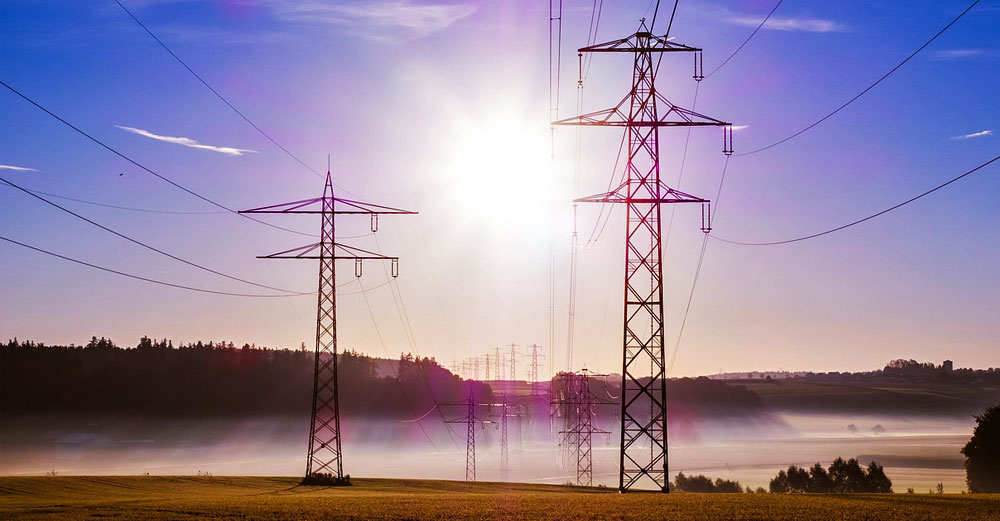
Changes in local weather patterns caused by a warming planet are posing unforeseen risk to the systems and structures that allow society to function.
In New York State, unprecedented flooding in New York City and the Mohawk River Valley heavily damaged transportation systems. Destructive hurricanes in Long Island and the Catskill Mountains destroyed power supplies. Extreme lake-effect snow events collapsed roofs across Western New York.
In response, SUNY faculty and staff, policymakers, concerned citizens, and forward-thinking industry leaders are collaborating to create resilient infrastructures that will allow New York State—and beyond—to thrive in a changed world.
Forecasting Extreme Weather Events
Advanced warning systems enable citizens, agencies, and first responders to better plan for extreme weather events and react quickly to natural disasters.
In 2014, Gov. Andrew Cuomo, the University at Albany and the NYS Division of Homeland Security and Emergency Services established the NYS Mesonet, a network of 126 weather stations across New York that comprise the most advanced early warning weather-detection system in the country. Each station is equipped with automated sensors that collect data on temperature, humidity, wind speed and direction, solar radiation, atmospheric pressure, snow depth and soil temperature and moisture every five minutes. The data are transmitted to a central facility at UAlbany, where they are quality controlled, processed into files and sent to emergency managers, utilities, ground and air transportation facilities, farms and other weather-sensitive businesses across New York for use in forecasting and decision-making.
Jeff Freedman, a research associate at UAlbany’s Atmospheric Sciences Research Center (ASRC), is working with researchers and meteorologists at the Consolidated Edison Company of New York and MESO, Inc. to develop machine learning algorithms that combine numerical weather prediction forecasts with real-time weather data, including from the NYS Mesonet, to better forecast wind-related outages. By determining where power outages are possible, the Wind Extremes Forecast System (WEFS) will enable utility companies and other stakeholders to mobilize resources more efficiently, reducing restoration time and improving the long-term resiliency of the state’s power distribution system. The project is sponsored by the New York State Energy Research and Development Authority (NYSERDA)’s Smart Grid program.
UAlbany’s Department of Atmospheric and Environmental Sciences and the National Weather Service (NWS) have collaborated for the past 18 years to research and predict weather events that have the potential to cause substantial societal and economic disruption in the Northeast. At the NWS’ Weather Prediction Center, located in College Park, MD, there are currently more UAlbany graduates working as meteorologists than any other college/university in the country.
A group at Stony Brook’s School of Marine and Atmospheric Sciences (SoMAS) has developed and been operating a real-time system to predict coastal storms and storm surge for several years for the New City and Long Island regions. In addition to providing hurricane and nor’easter flooding predictions and alerts, the system can be used to determine water quality and effluent dispersion and determine the feasibility of building storm surge barriers.
Managing Flood Risks
SUNY’s work to increase preparedness and improve resiliency encompasses both inland and coastal flooding.
After Superstorm Sandy devastated the Rockaways and a record flash flood occurred near Islip, officials in New York City recognized an urgent need to improve the city’s resilience to severe storms, hurricanes, and floods. Professor Brian Colle, head of the Coastal Meteorology and Atmospheric Prediction group at SoMAS, joined a team of scientists funded in part by the Mayor’s Office of Recovery and Resiliency to identify strategies that will protect at-risk areas in the city from future extreme weather events. Colle specializes in understanding atmospheric processes that produce extreme weather, such as from hurricanes, nor’easters and flash floods. By combining observations and high-resolution simulations of these storms this will help the group better understand and predict flooding conditions. Some of this knowledge has also been utilized in the latest report from NYC Panel on Climate Change (released on 14 March 2019), for which Colle is panel member and co-author.
Elsewhere at Stony Brook researchers are integrating physical and socioeconomic models with digital visualization to develop risk assessment models for coastal cities and ecosystems. These models will be used to develop and test technological solutions to extreme weather events.
Record snowmelt, heavy spring rains and Tropical Storm Irene caused historic flooding across the North Country in 2011. Dr. Curt Gervich, associate professor in SUNY Plattsburgh’s Center for Earth and Environmental Science, is working with the International Joint Commission—an agency established between Canada and the United States in 1909 by the Boundary Waters Treaty—on a five-year study to identify flood management and mitigation techniques that will help alleviate the impact of more frequent and severe floods in the Lake Champlain/Richelieu River basin.
SUNY Plattsburgh also played host to the bi-annual Lake Champlain/Richelieu River Study Board conference in October. Nearly 100 researchers, planners and decision makers from New York, Vermont and Quebec attended the event, which included flood-management presentations, planning, and a response simulation.
Strengthening Critical Infrastructure
Rising temperatures and more frequent and intense rain and snowfall present new and consistent threats to already crumbling roads, bridges, railways, and runways.
SUNY’s unique facilities enable researchers to study the causes, effects, and solutions to ongoing and newly emerging problems to physical and natural infrastructures. The University at Buffalo’s (UB) Structural Engineering and Earthquake Simulation Laboratory has acquired two high-performance, six degrees-of-freedom shake tables, where they test the performance of bridge construction methods. At Stony Brook’s Coastal and Hydraulic Engineering Research Laboratory (CHERL), the nation’s most advanced research-grade wave basin facility is used to conduct experiments on the resilience of coastal structures and beach morphology.
At the University at Buffalo, Dr. Ravi Ranade and his students are developing high-performance concrete with long-term resilience, as well as low-cost, ultra-durable concrete materials that promote environmental sustainability of bridges, tunnels, overpasses and other infrastructure. Dr. Ranade frequently serves as consultant to NYS Department of Transportation engineers regarding the use of advanced concrete materials for maintenance and repair.
A team at Binghamton University led by assistant professor Congrui Jin has found a way to permanently repair concrete using a fungus called Trichoderma reesei. During the mixing process, spores of the fungus are mixed into the concrete. When the first crack appears, allowing water and oxygen in, the fungal spores will grow and precipitate calcium carbonate to heal the cracks.
SUNY researchers are designing new ways to store and deliver electricity that will help mitigate outages and restore power quickly following extreme events. Stony Brook faculty in the College of Engineering and Applied Sciences are working on improving microgrid energy distribution systems. Not only will microgrids improve efficiency but they’ll also lessen the load on the main power grid and ensure that local residents will continue to have power after a catastrophic weather event.
Thanks to a $1.37 million investment funded in part by BuildSmart NY, New York State Energy Research and Development Authority (NYSERDA), and Central Hudson Gas & Electric, SUNY New Paltz is now home to a cutting-edge solar energy and battery storage system, which provides continuous solar power and reduces the university’s dependence on the state’s electrical power grid. At times of high demand and emergencies, the battery storage unit kicks in to ensure a steady stream of power to the university.
The new Infrastructure, Transportation and Security Center builds on computer science, information technology, and civil engineering strengths at four SUNY campuses—Stony Brook University, Farmingdale State College, Maritime College and Nassau Community College—to research existing and emerging technologies and advance innovative solutions that reduce vulnerabilities and promote safety, resiliency and sustainability.
SUNY’s strength and investment in cybersecurity can secure infrastructure from cyberattacks, not only for modern systems but also for legacy systems that might not have the latest safeguards. Cyber-physical modeling can identify vulnerabilities in complex systems that combine physical and software components, such as electricity grids, air-quality systems, and the like.
The University at Albany’s College of Emergency Preparedness, Homeland Security & Cybersecurity hosted the 11th Annual Homeland Defense/Security Education Summit, where panels addressed wicked problems in cybersecurity and emergency management, as well as the potential for universities to engage in catastrophic events preparation.
Designing for Climate Resilience
Buildings and landscapes—those that already exist and those that are yet to come—need to be reassessed for their vulnerability to disaster and disruption of normal life caused by climate change.
Researchers at Stony Brook University are using embedded sensors to assess the conditions of bridges and tunnels below the structures’ surfaces. The collected data can be used to analyze stress and predict failure ahead of time.
UB professor Nicholas Rajkovich, assistant professor of architecture in the School of Architecture and Planning, led a three-year collaborative study with NYSERDA and the UB Regional Institute to guide architects, city planners, and policymakers on rehabilitating or retrofitting existing buildings for future weather disasters. The project is the first of its kind; while many states have projected the effects of climate change on transportation, agriculture, and local economies, none has studied the effect of climate change on buildings. The study analyzed future weather events, regional building-related costs, and climate resilience strategies.
At the College of Environmental Science and Forestry, landscape architect Margaret Bryant investigates design options for climate resilience on the neighborhood scale. Her focus is on extreme heat—a consideration that will gain more and more importance as temperatures continue to rise. Dr. Bryant is director of the Center for the Urban Environment (CUE), which promotes planning and community outreach to protect ecologically sensitive urban areas and educates city dwellers about the environment and how to respond to climate change.
Education and Training
The Renewable Energy and Sustainability Center (RESC) at Farmingdale State College (FSC) offers formal training in Renewable Energy technologies such as Solar PV, Geothermal, Small Wind and Solar Thermal. In addition, RESC offers free public awareness seminars aim at educating the public on energy efficiency programs and measures. Energy efficiency (EE) and renewable energy (RE) deployment can bridge action across climate change mitigation and resilience through reducing GHG emissions and supporting electric power sector adaptation to increasing climate risk. By supporting EE and RE deployment via education and integrating demonstration facilities such as Solar Car port and charging station FSC is instrumental in promoting a climate resilience energy system in New York State.
With its unparalleled scope and range, SUNY is helping New York State adapt to whatever our future holds.




I think sometimes certain people don’t put a high priority to climate change, but when you relate it to their personal experiences, i.e. increased blackouts, power grid problems, natural disasters, anything that can threaten their own safety and well-being, it can drive home the message. In any case, I completely agree that advanced warning systems are important to alert residents.
People need to become more aware of nature, environment and the related technology. That’s really very necessary in order to save humans, wildlife and earth.
If we put in effort to minimise damage to our environment and climate, we won’t need to spend so much on mitigating the adverse effect of climate change.
we will have better technology in the future, they will have ability to accurate forecast , take measurement and take action reactive with current weather and climate . yeah like in the sci fi movies